Vintage Recipe Roulette: Sour Cream Raisin Pie
The 1975 Bogota, TX Methodist Church Cookbook rides again
In case this is your first time visiting the Department of Antediluvian Disquietude and you missed the first installment, this is the latest in a series of Vintage Recipe Roulette reviews using only recipes from Talk About Good, my grandmother’s 1975 community church cookbook. In just 164 pages, this collection of homestyle recipes encapsulates the unlikely intersections of 1800s frontier cuisine, post-war convenience foods, and the mid-century American fetishization of canned chow mein noodles. It is untested, unstandardized, and unmatched in its vintage glory in my opinion. Some of the recipes are amazingly good! And some are amazingly…not. Could anything with a cup of raisins in it be edible? Let’s find out!
It’s taken me 20 minutes to stop cringing long enough to describe this week’s foray into retro cooking: Sour Cream Raisin Pie.
I feel about raisins the way Indiana Jones feels about snakes.
A grape is a thing of beauty, translucent and refreshing, but dehydrated? Fruity mummies, their tannic tendencies concentrated, little lumps of furrowed brow and sadness, and the one sure way to ruin a pie.
But, what if my tastes have changed over time the way they have with licorice, and I’m missing out on a next-level gustatory experience? It’s hard to imagine, but I’m doing this for you, dear reader. What’s the worst thing that could happen? (*cringe*)
Luckily, this recipe is as historically interesting as it is terrifying. The brevity of the instructions is fascinating — “Meringue” it says, as though you could list the ingredients and method off the top of your head. And, “raisins, cooked”? How, and for how long? The filling, “cook until thick”? There are no temperatures or details offered, and I’m glad to have a lot of vintage cooking and food science under my belt, but at the time, such ingredients and instructions were learned along with boiling water, such negligible skills that they didn’t bear repeating. Even the most reluctant cooks of yesteryear were titans of culinary prowess by today’s standards. And that’s okay — some of the oldest archaeological sites are bakeries, and there’s nothing wrong with outsourcing your meals as long as you choose things that prioritize your wellness most of the time. If you’re cooking this yourself for the first time, though, pitfalls abound, and I’ll get to those. Let’s assemble the ingredients:
The piecrust I used is my old standby, the All-Butter Crust (plus a little cider vinegar) from Four and Twenty Blackbirds, but of course you could use a store-bought one, and since this pie does not have to be baked after filling, you could also use a graham crust. It’s fun to learn to make crust, though, and it’s a great way to avoid trans fat and weird preservatives; I actually use half butter and half Neufchatel cheese in my pie crust to make it slightly healthier. If you’d like to try it, take a look at King Arthur Flour’s frozen pie crumbs shortcut, and consider making your life easier with their zippered pie crust rolling bag. (Not an ad, just love the gadget!) Since I do not want a lot of this undead zombie grape pie, I halved the recipe for both the crust and filling, and used a 7” springform pan.* King Arthur also has great instructions for “blind baking” a pie crust for use with pre-cooked or no-cook fillings.
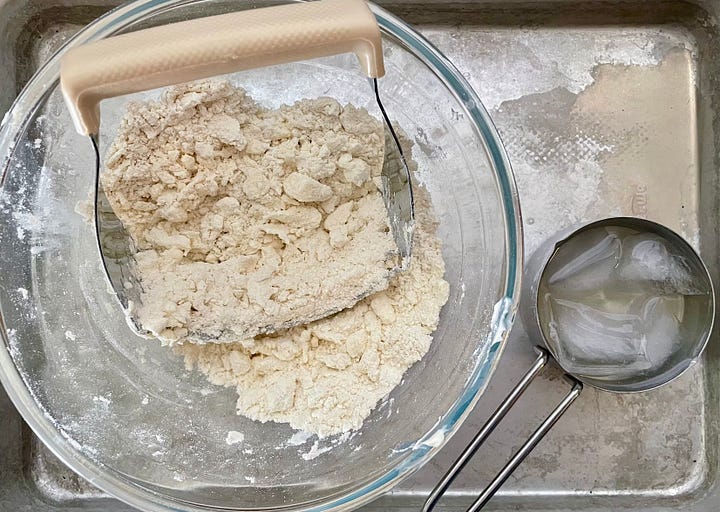
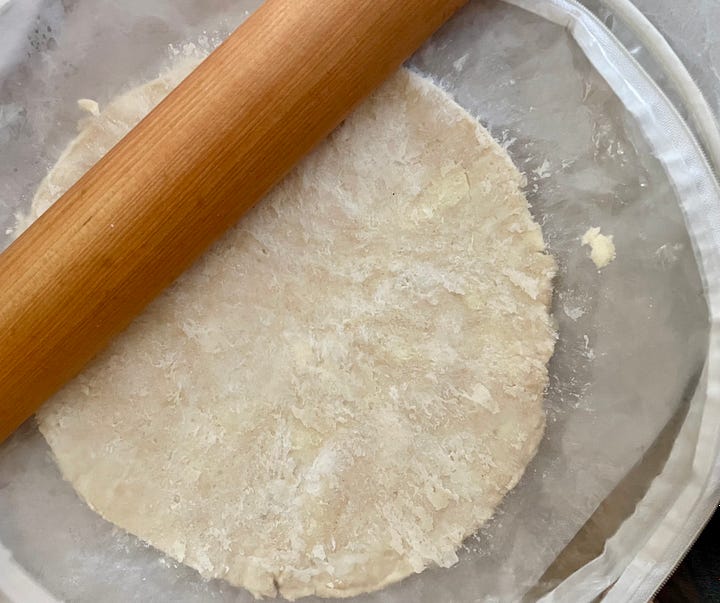
Now to the filling. Here be dragons.
Cooked raisins: When using dried fruit in baking, remember that it will absorb water from the surrounding batter or filling, so follow the instructions on the recipe you’re using, lest you end up with a shriveled and dry cake or cookie. This recipe specifies re-plumped sadness raisins, probably both to maintain the liquid in the filling and to disgustify improve the texture. Once you stop cringing, you can soak overnight, or pour hot water over and let stand for 15 minutes. I poured water over them to cover, brought to a boil for 5 minutes, let stand the remaining 10, and then drained. No matter what, your kitchen will be redolent with the scent of mmmmm…raisins.
Cooked filling: This is a real devil of a recipe step with several variables to consider, but Ms. Jo Ann Hancock knew how to do it without a second thought! It doesn’t say anything about the heat level or how to tell when it’s done, so look at the ingredients to hazard some guesses. It looks something like a custard or pastry cream filling that will then be studded (*shudder*) with raisins. Sugar melts at 367 degrees F, but we don’t need it to caramelize or candy-crackle — we just need it to dissolve, and it’ll do that well enough with the water in the sour cream. The thickening will come from flour and egg yolk. We’ll need to get the starch in the flour up to about 175 degrees for it to gelatinize and stop tasting like raw flour. Easy enough…until you consider that egg proteins start to denature and clump at about 158 F, and milk products tend to split into a watery mess at about 180 F. If we’re not careful, we’ll get clotted scrambled egg and raisin pie.
When you’re done sobbing uncontrollably about that concern, rest assured that there are a lot of factors in our favor: as long as you mix the ingredients smoothly and carefully, heat on medium or even medium-low, and DON’T STOP WHISKING THE ENTIRE TIME, the dairy, flour, and eggs will sort of jazz it out with each other. The flour helps stabilize the dairy, the dairy dilutes the egg to reduce scrambling risk, and the egg yolk has some enzyme activity that prevents floury lumps. That’s why baking can be so difficult — you really do need to follow a recipe most of the time, or things won’t be balanced, and you’ll get a texture I like to call SpongeBog. With raisins.
Ghastly Lastly, meringue: Nope. Nope. I will try raisins for you, but meringue is like someone took the worst part of the cappuccino and made it watch Eraserhead repeatedly in an abandoned warehouse, while threatening it with raisins. To quote a great man, I would do anything for love, but I won’t do that. If you want to do it, the American Egg Board’s cooking school has a recipe that covers safety as well as culinary technique. Feel free. I’m going to do a modernized convenience version of chantilly cream, which is to say…vanilla Greek yogurt.
(As a nutrition professional, though, I feel duty-bound to tell you that only psychopaths like meringue. Goes double for raisins.)
I am happy to report that using the egg yolk (instead of haphazardly subbing a little egg white in the carton the way I usually do when I only need half an egg), mixing carefully, heating slowly, whisking constantly, and cursing under my breath resulted in a lovely pudding-like consistency that should thicken even more with cooling. I added some vanilla and nutmeg because there is no way I’m eating unvarnished raisins. (*cries*) You can tell it’s done when your whisking implement leaves a track at the bottom of the pan that doesn’t immediately close back in, likely right at the point of starting to boil. I tossed in nuts and (ugh) raisins immediately lest it thicken to the point of making that difficult, and I barely even cried this time!
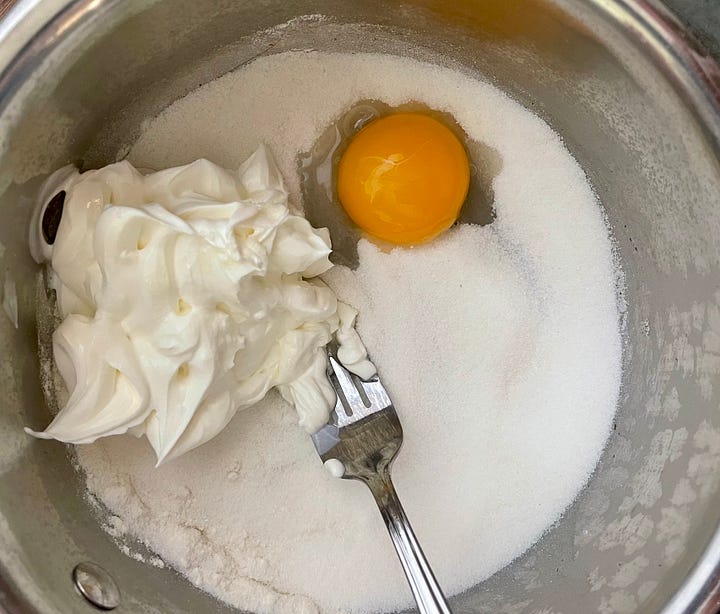
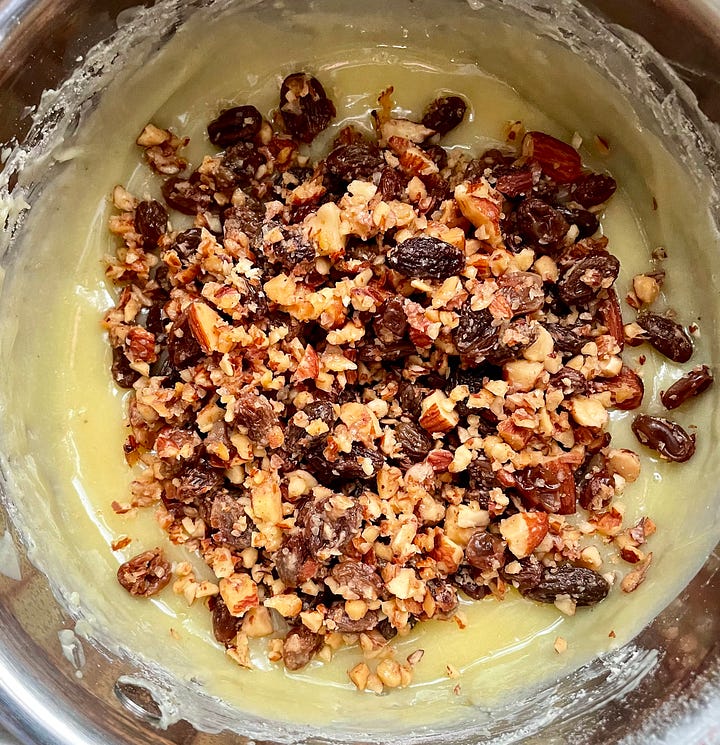
Once in the pastry shell, it looks what I’ll charitably call unusual even with an appropriate garnish and decorative dusting of nutmeg, but it’s not the Better Off Dead dinner cthulhu I was anticipating.
And, I can’t believe I am saying this, but it’s pretty good. It’s reminiscent of pecan pie, and the raisins don’t contribute much to either flavor or texture. It’s not at all sour, either. We are actually going to eat the rest of this thing.
That said, just because something with raisins in it is edible with a minimum of weeping, that doesn’t mean it couldn’t be improved by NOT having raisins in it. It would be spectacular with chocolate chips added (there’s enough custard stuff to go around if you make it equal in amount to the raisins). If come holiday time you replaced the raisins with the far more fashionable and delicious craisins/dried cranberries, and maybe a white chocolate drizzle? To quote another great man,
SUBLIME.
* RD notes: Nothing here is sponsored, no deals or ads, and I purchased ingredients myself. About cutting recipes in half, or making minis and trying to figure out how much filling you need, you could use the formula for volume of a cylinder, which is radius x height, for your pan or container. There are 14.4375 cubic inches per American cup, but I think we can round to 14.5, don’t you? It’s easier, though, to measure out cups of water or dried beans or whatever and fill your pan with that to find out the approximate volume you’ll need.
New tip jar! Zen and the Science of Candy Corn is a reader-supported publication that brings me great joy. Feel free to subscribe for free, and of course I really appreciate paid subscribers!!! But I’m kind of annoyed that the minimum on Substack is $50, so I’m happy to learn I could make a custom button for people who’d like to send me a one-time or recurring tip on PayPal. You can literally give me your 2 cents with the tip jar button below.
Of course, if you’d like to subscribe, free or paid, that would be SUBLIME!
And please feel free to share this post with any raisin-loving psychopaths you know.

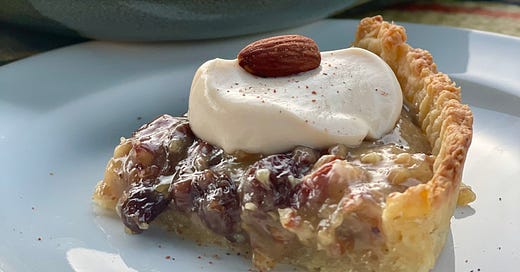





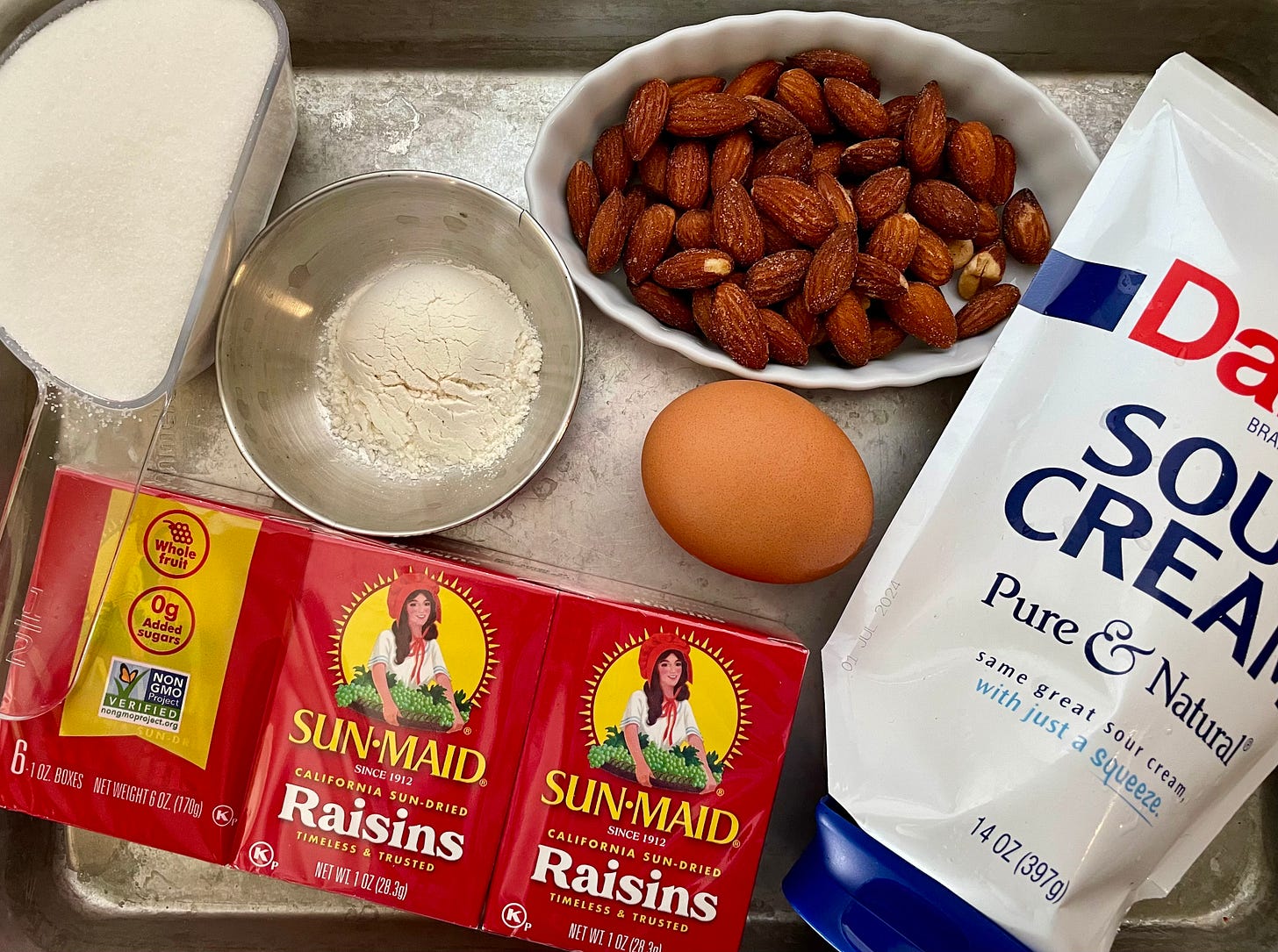
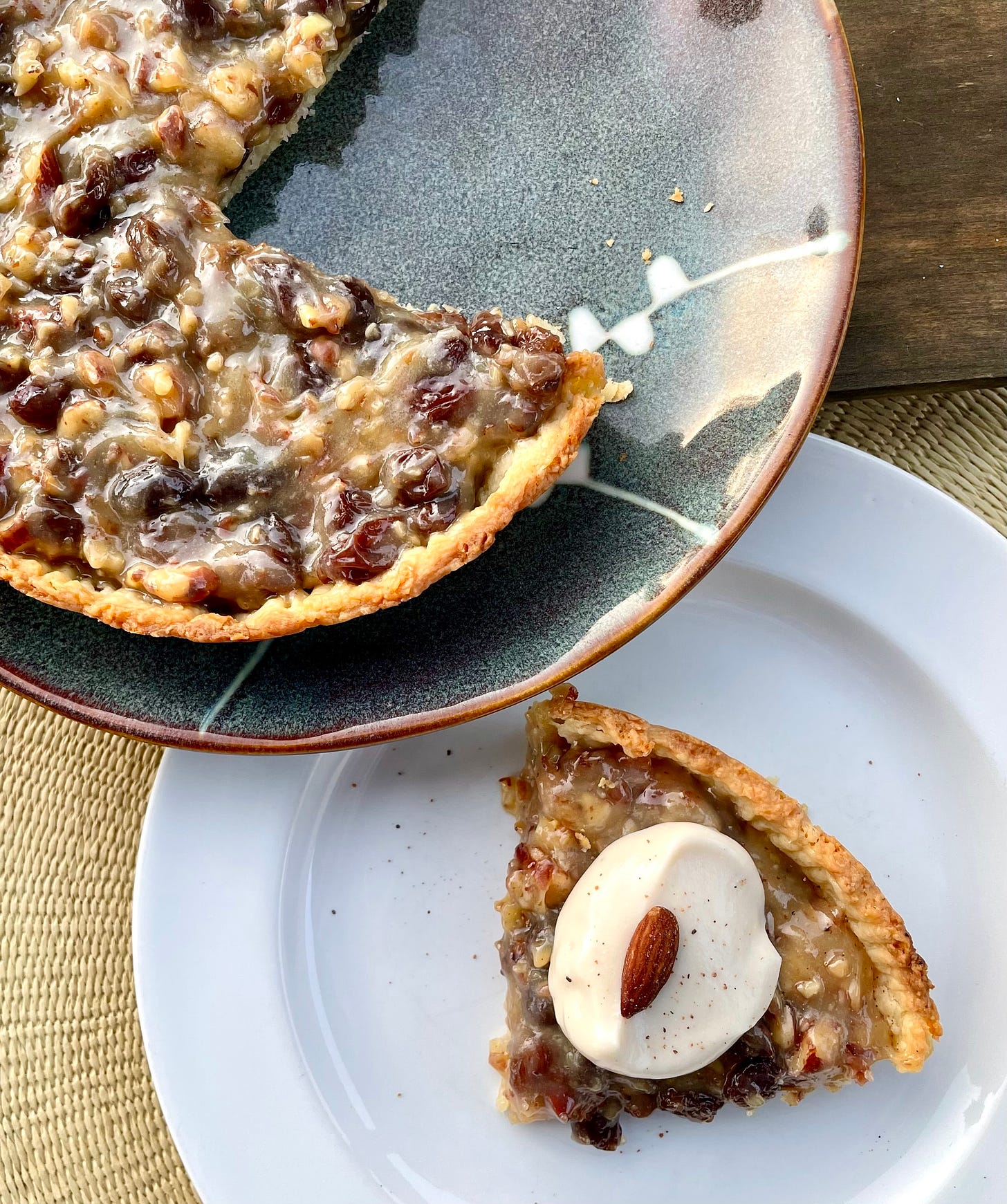
Thank you for throwing yourself on that shriveled dead bug grenade.